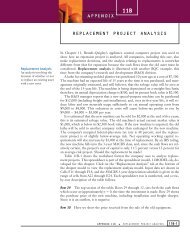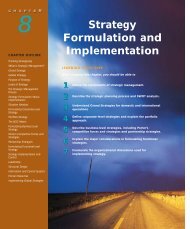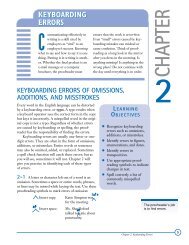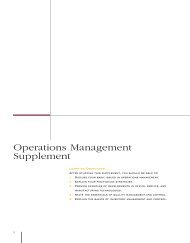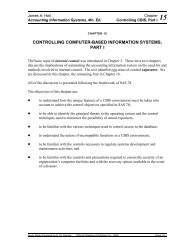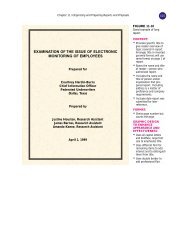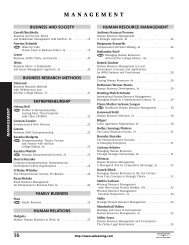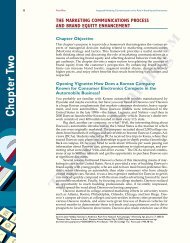The Keynesian Cross
The Keynesian Cross
The Keynesian Cross
You also want an ePaper? Increase the reach of your titles
YUMPU automatically turns print PDFs into web optimized ePapers that Google loves.
<strong>The</strong> <strong>Keynesian</strong> <strong>Cross</strong> 3<br />
a decrease in consumer confidence would act to decrease spending (a movement from A to B in<br />
Figure 1). For example, a decline in the consumer confidence index after the Iraqi invasion of<br />
Kuwait, and a subsequent fall in household spending, has been suggested as a cause of the<br />
1990–91 recession in the United States.<br />
Tastes and Preferences<br />
Of course each household is different. Some are young, beginning a working career, some are<br />
without children, others have families, and still others are older and perhaps retired from the<br />
workforce. Some households like to save, putting dollars away for later spending, while others<br />
spend all their income, or even borrow to spend more than their current disposable income. <strong>The</strong>se<br />
saving and spending decisions often vary over a household’s life cycle.<br />
As you can see, there are many economic factors that affect consumption expenditures. <strong>The</strong><br />
above list represents some of the most important, but there can be others. All of these are considered<br />
autonomous determinants of consumption expenditures; that is, those expenditures that<br />
are not dependent on the level of current disposable income. Now let’s make our model more<br />
complete and evaluate how changes in disposable income affect household consumption expenditures.<br />
A New Model: Consumption Depends on Disposable Income<br />
In our first model, we looked at the economic variables that affected consumption expenditures<br />
when disposable income was fixed. This is clearly an unrealistic assumption, but one that allows<br />
us to develop some of the basic building blocks of the <strong>Keynesian</strong>-cross model. You will see why<br />
this presentation is called a <strong>Keynesian</strong>-cross at the end of this section. Now we’ll look at a slightly<br />
more complicated model in which consumption also depends on disposable income.<br />
If you think about what determines your own current consumption spending, you know that<br />
it depends on many factors previously discussed, such as your age, family size, interest rates,<br />
expected future disposable income, wealth, and, most importantly, your current disposable<br />
income. Your personal consumption spending depends most importantly on your current disposable<br />
income. In fact, empirical studies show that most people’s consumption spending is closely<br />
tied to their disposable income.<br />
Marginal Propensity to Consume and Save<br />
What happens to current consumption spending when a person earns some additional disposable<br />
income? Most people will spend some of their extra income and save some of it. <strong>The</strong> percentage<br />
of your extra disposable income that you decide to spend on consumption is what economists call<br />
your marginal propensity to consume (MPC). That is, MPC is equal to the change in consumption<br />
spending (C) divided by the change in disposable income ((DY).<br />
MPC = C/ DY.<br />
For example, suppose you won a lottery prize of $1,000. You might decide to spend $750 of<br />
your winnings today and save $250. In this example, your marginal propensity to consume is .75<br />
(or 75 percent) because out of the extra $1000, you decided to spend 75 percent of it (0.75 <br />
$1000 = $750).<br />
<strong>The</strong> term “marginal propensity to consume” has two parts: (1) “marginal” refers to the fact<br />
that you received an extra amount of disposable income—an addition to your income, not your



